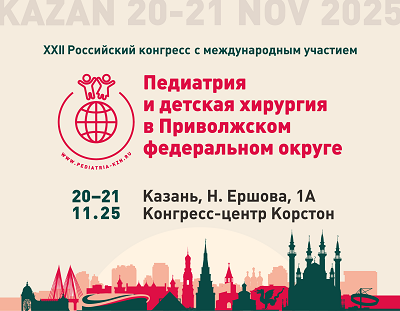Clinical case of pachydermoperiostasis in pediatrician’s practice
https://doi.org/10.21508/1027-4065-2025-70-5-104-107
Abstract
Pachydermoperiostosis is a rare genetic disease manifested by a sharp thickening and compaction of the facial skin as a result of hyperplasia of the connective tissue of the dermis and epidermis, periostosis and deformation of the distal phalanges of the fingers and nails according to the type of «drumsticks» or «watch glasses». The disease is more common in males with an onset in adolescence. One of the reasons for the development of the primary form is a mutation in the HPGD, SLCO2A1 genes, leading to a consistently elevated level of prostaglandins E2 in the blood. The secondary form of pachydermoperiostosis is characterized mainly by bone changes and pathologies of the pulmonary and cardiovascular systems.
About the Authors
Kh. M. VakhitovRussian Federation
420012, Kazan
A. V. Ishbuldina
Russian Federation
420012, Kazan
O. A. Karpova
Russian Federation
420138, Kazan
I. R. Zinаtullin
Russian Federation
420138, Kazan
D. V. Tolkacheva
Russian Federation
420012, Kazan
References
1. Lyubimova N.A., Snegireva L.S., Terentyev N.A., Idrisova R.V., Avramenko V.V., Imelbaev A.I., et al. Primary idiopathic hypertrophic osteoarthropathy in children — characteristics of the disease with a description of a clinical case. Sovremennaya revmatologiya. 2017; 11(4): 40–47 (in Russ.). DOI: 10.14412/1996-7012-2017-4-40-47
2. Touraine A., Solente G., Gole L. Un syndrome osteodermopathique: la pachydermie plicaturee avec pachyperiostose des extremites. La Presse Med. 1935; 43: 1820–1824
3. Friedrich N. Hyperostose des gesammten skelettes: virchows. Arch Pathol Anat. 1868; 43: 83
4. Kholupko N.V., Vashchenko E.N., Makhlina E.S., Navmenova Y.L., Rozhko A.V. Differential diagnosis of acromegaly and pachydermoperiostosis. Problemy zdorov’ya i ekologii 2023; 20(2): 146–151. (in Russ.). DOI: 10.51523/2708-6011.2023-20-2-19
5. Prerna, Ghosh R., Barua J.K., Das A.K. Pachydermoperiostosis Mimicking Acromegaly: A Case Report. Indian dermatology online journal 2018; 9(3): 182–184 DOI: 10.4103/idoj.IDOJ_230_17
6. Karacheva Y.V., Vinnik Y.Y., Smykova A.N., Karachev A.Y., Makovetskaya O.D. Primary pachydermoperiostosis. Klinicheskaya dermatologiya i venerologiya 2021; 20(3): 139–143. (in Russ.). DOI: 10.17116/klinderma202120032139
7. Fursenko V.A., Grebennikova T.A., Nikitin A.G., Belaya Zh.E. Pachydermoperiostosis: a case report. Osteoporoz i osteopatii 2017; 20(2): 52–57. (in Russ.). DOI: 10.14341/osteo9354
8. Dadali E.L., Markova T.V., Kenis V.M., Nagornova T.S., Nikitin S.S. Clinical and genetic characteristics of primary hypertrophic osteoarthropathy. Nervno-myshechnye bolezni 2023; 13(2): 56–63. (in Russ.). DOI: 10.17650/2222-8721-2023-13-2-56-63
Review
For citations:
Vakhitov Kh.M., Ishbuldina A.V., Karpova O.A., Zinаtullin I.R., Tolkacheva D.V. Clinical case of pachydermoperiostasis in pediatrician’s practice. Rossiyskiy Vestnik Perinatologii i Pediatrii (Russian Bulletin of Perinatology and Pediatrics). 2025;70(5):104-107. (In Russ.) https://doi.org/10.21508/1027-4065-2025-70-5-104-107










































